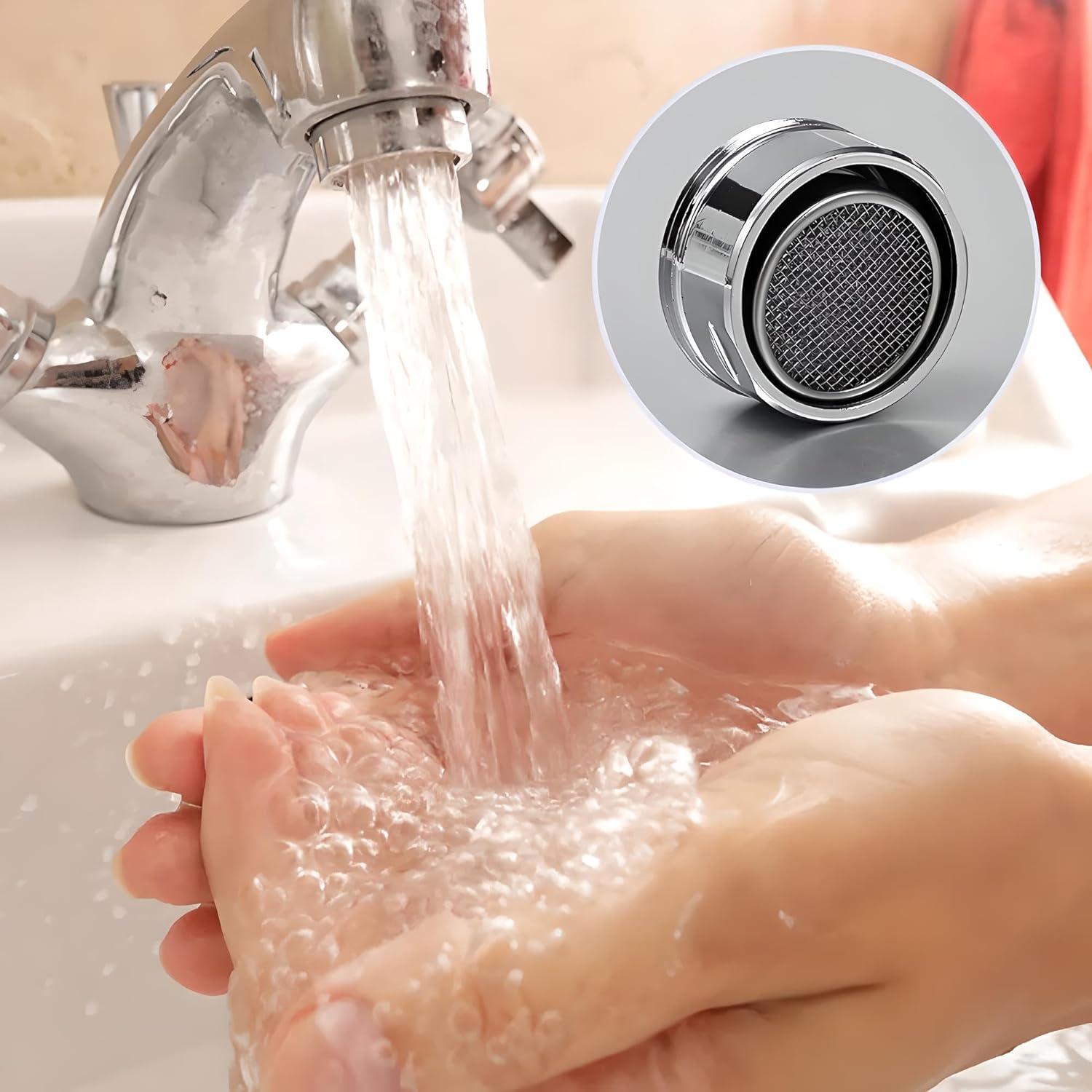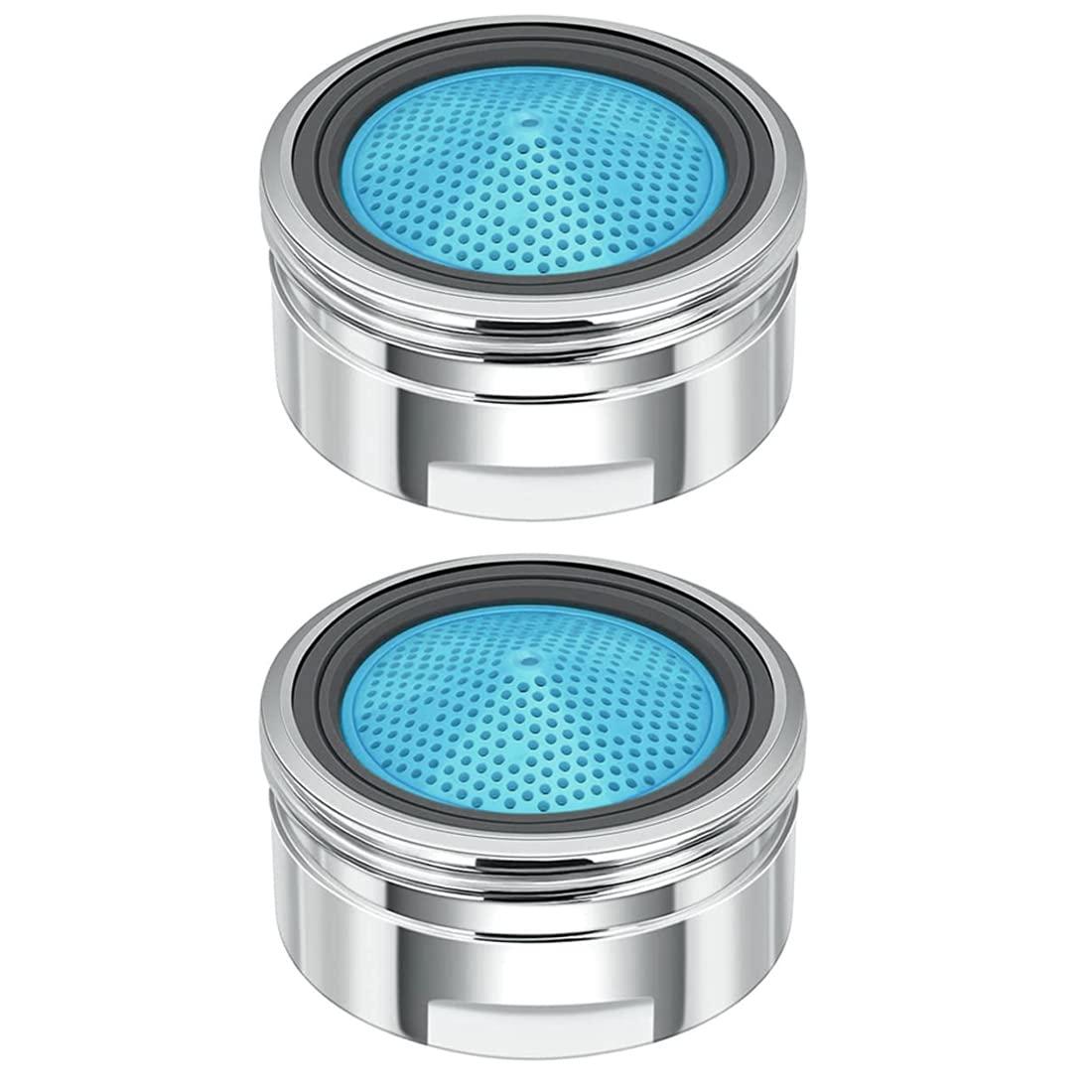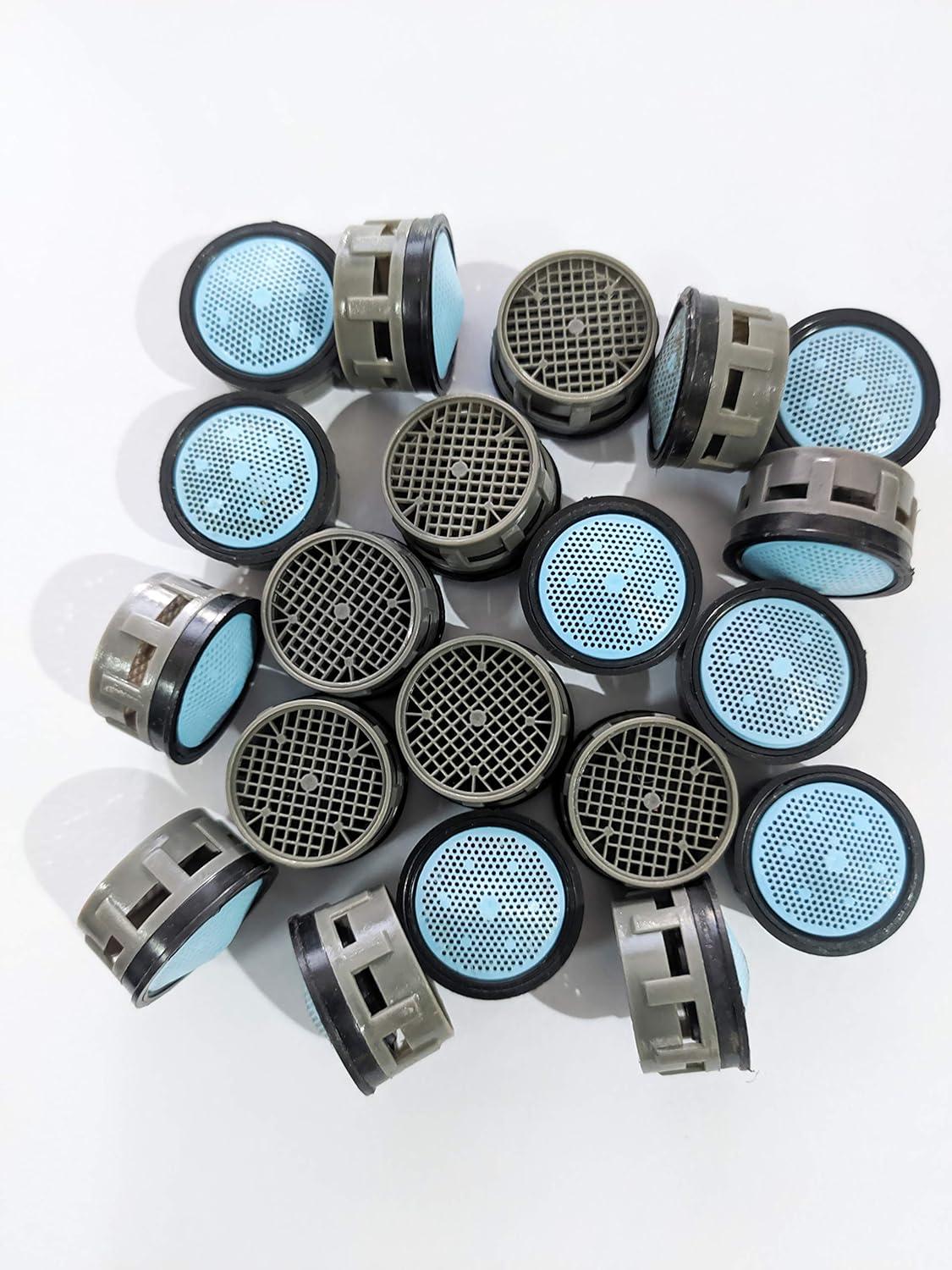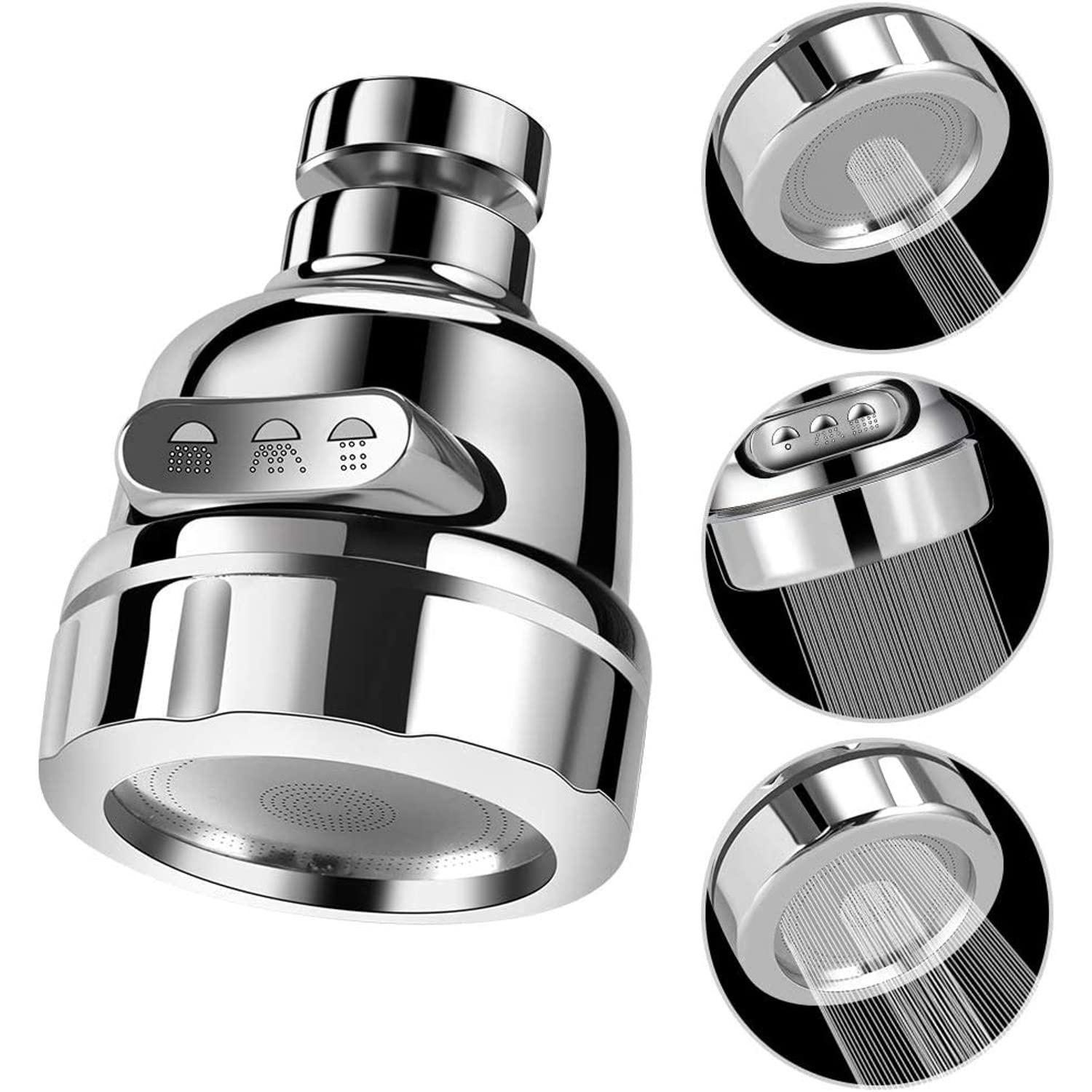



Table of Contents
- What are Aerators?
- How Aerators Work
- Benefits of Using Aerators
- Types of Aerators
- Cost of Aerators in India
- Maintainence of Aerator Taps
- Faq's
What are Aerators?
Aerators are small, inexpensive devices that can be easily installed on your taps to significantly reduce water consumption without compromising water pressure or flow. By mixing air into the water stream, aerators provide the same satisfying water flow while using much less actual water. This simple yet effective solution is an excellent way for households to conserve water and save money on utility bills.

How Aerators Work
Aerators work by dividing the water flow into multiple small streams and introducing air into the water. This air-water mixture provides the same perceived water volume and pressure as a regular tap, but with a reduced actual water flow rate.
The aerator acts as a sieve, separating the water into tiny streams and allowing air to mix in. As there is less space for the water to flow through, the overall water flow is reduced, resulting in significant water savings. However, the air-water mixture maintains the water pressure, so most people do not notice a difference in the amount of water coming out of an aerated tap.
 Source: Amazon.in
Source: Amazon.in
Benefits of Using Aerators
Water Conservation
Aerators can reduce water usage by up to 50%, saving thousands of liters per month.
By reducing water consumption, aerators help conserve this precious resource.
Cost Savings
Using less water leads to savings on utility bills, especially if you have older taps that use around 15 liters per minute.
Reduced water usage also means less energy is needed to heat the water, leading to additional savings on gas or electricity bills.
Improved Water Pressure
Aerators can help resolve low water pressure issues in homes by generating stronger pressure behind them, resulting in a steadier water stream.
Noise Reduction
Aerators increase the air in the water stream, which helps minimize noise and gurgling in the faucet.
Cleaner Water
The small screens in aerators filter out microscopic particles and debris that enter the water supply, providing cleaner water for use.
Reduced Splashing
The screens in aerators help balance the water flow to prevent splashes and erratic water dispersion, keeping the surrounding area clean.
Easy Installation
Aerators are inexpensive and simple to install, requiring only a few minutes to screw them onto the tap or replace an existing one.
In summary, aerators offer significant benefits in terms of water conservation, cost savings, water pressure, noise reduction, water filtration, and ease of installation, making them a smart choice for any household looking to optimize water usage and efficiency.
Types of Aerators
Aerators play a crucial role in water conservation and wastewater treatment by enhancing oxygen transfer and promoting efficient water flow patterns. Here, we delve into the details of each type of aerator based on their water flow patterns and functionalities:
Aerated Aerators
Aerated aerators provide a standard spray of air-mixed water, creating a soft and bubbly stream that is gentle on the skin and ideal for everyday use.
By introducing air into the water stream, aerated aerators reduce water consumption without compromising water pressure. The air-water mixture maintains a consistent flow rate while minimizing splashing and ensuring a satisfying user experience.
Benefits:
- Soft and gentle water flow.
- Efficient water conservation.
- Reduced splashing in sinks.
- Maintains consistent water pressure.
Laminar Aerators
Laminar aerators deliver a non-splashing, solid stream of water, providing a clear and uninterrupted flow that is suitable for tasks requiring precision and control.
Laminar aerators produce a single, undisturbed stream of water without mixing air, ensuring a smooth and controlled flow pattern. This type of aerator is commonly used in applications where a steady and precise water stream is essential.
Benefits:
- Clear and uninterrupted water flow.
- Ideal for tasks requiring precision.
- Controlled and consistent water stream.
- Suitable for specific applications like medical facilities or laboratories.
Spray Aerators
Spray aerators offer a miniature shower-like spray pattern, dispersing water in a wide and gentle spray that is suitable for tasks requiring coverage over a larger area.
Spray aerators create a broad and even water spray that covers a larger surface area, making them ideal for tasks like washing dishes or rinsing fruits and vegetables. This type of aerator provides efficient water distribution while maintaining a comfortable water flow.
Benefits:
- Wide and even water spray pattern.
- Suitable for tasks requiring coverage over a larger area.
- Efficient water distribution.
- Comfortable and versatile water flow for various applications.
Understanding the different types of aerators and their unique characteristics is essential for selecting the most suitable option based on specific needs and preferences. Whether you prioritise water conservation, precise water control, or efficient water distribution, choosing the right aerator can enhance your overall water usage experience while contributing to environmental sustainability.
Cost of Aerators in India
Maintainence of Aerator Taps
Regular Cleaning
Aerators should be cleaned at least every 6 months and after any disruption in water service to your home
Cleaning helps remove mineral deposits and debris that can build up on the aerator screen, reducing water pressure and flow
Removal and Disassembly
To clean, first remove the aerator from the faucet by unscrewing it counterclockwise
For standard aerators, you may be able to unscrew by hand, otherwise use pliers or a wrench
For recessed "cache" aerators, you'll need a special tool that fits into the grooves to unscrew it
Disassemble the aerator parts and keep track of the order.
Cleaning Process
Soak the disassembled aerator parts in white vinegar for 20-30 minutes to help break down mineral deposits
Use a small brush or pin to scrub and remove any debris stuck in the screen or spray holes
Rinse the parts thoroughly under running water to remove loosened debris.
Reassembly and Reinstallation
Carefully reassemble the aerator in the correct order.
Screw the reassembled aerator back onto the faucet by hand, turning clockwise
If needed, use pliers or a wrench to tighten it further to prevent any leaks.
Turn on the faucet to check for even water flow and restored pressure.
Regular maintenance of faucet aerators is important to maintain optimal water flow and quality. Cleaning should be done at least twice a year and after any plumbing work or water service disruptions to your home
explore further
Latest from Sustainable
More from Innovations
Resources
Dwello, for every home buyer, is a way to go from 'I feel' to 'I know', at no extra cost.





